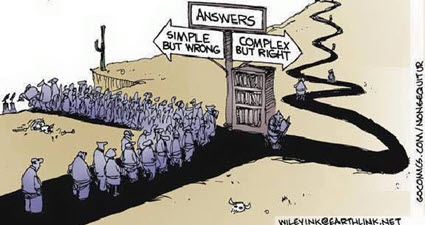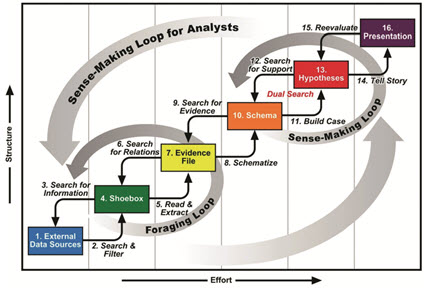BLOG: Digital Financial Reporting
This is a blog for information relating to digital financial reporting. This blog is basically my "lab notebook" for experimenting and learning about XBRL-based digital financial reporting. This is my brain storming platform. This is where I think out loud (i.e. publicly) about digital financial reporting. This information is for innovators and early adopters who are ushering in a new era of accounting, reporting, auditing, and analysis in a digital environment.
Much of the information contained in this blog is synthasized, summarized, condensed, better organized and articulated in my book XBRL for Dummies and in the chapters of Intelligent XBRL-based Digital Financial Reporting. If you have any questions, feel free to contact me.
Entries from January 2, 2022 - January 8, 2022
Things Accountants Will Likely Get Wrong about Transformation to Digital
Successful business models are built; overcoming adversity; then business models are undone. Burroughs is a perfect example of this. There are many others, all one needs to do is look.
It would be wishful thinking to believe that the institution of accountancy in whole or in part can escape the fate of the change from analog to digital. Change will come. There are two possible types of change: change by replacement (total disruption) and change by reform (adapt what exists). Likely the change will be a combination of replacement and reform.
The Great Upheaval, on pages 208 and 210, provides a summary of commonalities that stand out which industries get wrong during the transition from analog to digital. Here are the common patterns:
- Clinging tenaciously to business models and products too long, even after they were broken or even longer
- Making minimum alterations to business models in a piecemeal fashion by reform, repair, adaption
- Making knee jerk piecemeal responses to adapt rather than making holistic organizational changes
- Do not recognize the coming threat that digital technology posed nor the magnitude of that threat
- Change happened behind their backs while they were busy doing business as usual
- Half-heartedly throw a flurry of puny remedies and failed attempts to find solutions at the wall; but nothing sticks; leading to the belief that meant the market preferences current practices and approaches
- Thinking myopically and focusing on the short term rather than thinking strategically and thinking longer term
- Favoring financial cost cutting rather than investing in the future
- Not being aware of the emergence and growth of potential competitors
Things change; that is a given. No one can predict the future, not even me. But because it is unclear what will happen is not license to be ignorant of what is going on. "Digital" is not software; it is a mindset. This transformation we are in the midst of is not about technology, it is about talent.
Answers: Simple but Wrong; Complex but Right
This cartoon says it all. As H. L. Mencken pointed out, "For every complex problem there is an answer that is clear, simple, and wrong." This is not to say that complex problems demand complex solutions.
A kluge is a term from the engineering and computer science world that refers to something that is convoluted and messy but gets the job done. Elegance is the quality of being pleasingly ingenious, simple, neat. Elegance is about beating down complexity.

Creating something complex is easy. Creating something simple and elegant is hard work.
Complexity can never be removed from a system, but complexity can be moved. The Law of Conservation of Complexity states (paraphrasing): "Every application has an inherent amount of irreducible complexity. The question is who will have to deal with that complexity: the application user, the application developer, or the platform developer that the application runs on?"
Irreducible complexity (paraphrasing) is explained as follows: A single system which is composed of several interacting parts that contribute to the basic function and where the removal of any one of the parts causes the system to effectively cease functioning.
For example, consider a simple mechanism such as a mousetrap. That mousetrap is composed of several different parts each of which is essential to the proper functioning of the mousetrap: a flat wooden base, a spring, a horizontal bar, a catch bar, the catch, and staples that hold the parts to the wooden base. If you have all the parts and the parts are assembled together properly, the mousetrap works as it was designed to work.
But if you remove one of the parts of the mousetrap then the mousetrap will no longer function as it was designed; it will simply not work.
That is irreducible complexity: the complexity of the design requires that it can't be reduced any farther without losing functionality.
Simplistic and simple are not the same thing.
Simplistic is dumbing down a problem in order to make the problem easier to solve. Simplistic ignores complexity in order to solve a problem which can get you into trouble. Simplistic is over-simplifying. Simplistic means that you have a naïve understanding of the world, you don't understand the complexities of the world. Removing or forgetting complicated things does not allow for the creation of a real world solution that actually work.
Simple is something that is not complicated, that is easy to understand or do. Simple means without complications. An explanation of something can be consistent with the real world, consider all important subtleties and nuances, and still be simple, straight forward, and therefore easy to understand.
Sensemaking is the process of determining the deeper meaning or significance or essence of the collective experience for those within an area of knowledge. Sensemaking is a tool. You can use sensemaking to construct a map you can share with others. Sensemaking is the art of analysing, understanding, clarifying, untangling, organizing, and synthesizing.
This graphic from the paper Toward a Deeper Understanding of Data Analysis, Sensemaking, and Signature Discovery helps you understand the sense making process.
The results of my sensemaking related to accounting, reporting, auditing, and analysis has been summarized in the following documents that will help you wrap your head around the transition from an industrial, analog society to a knowledge, digital society for that area of knowledge. (best read in order)
- Essence of Accounting
- Computational Professional Services
- Financial Report Knowledge Graphs
- Seattle Method
- Essentials of XBRL-based Digital Financial Reporting
- Logical Theory Describing Financial Report
- Mastering XBRL-based Digital Financial Reporting (contains all of the above but adds more details)
To grasp the big picture of the environment we are in, great upheaval that we are in the midst of, I recommend the book by the same name, The Great Upheaval.
If you have a different perspective or ideas I would be very happy to hear them; please contact me.
######################


